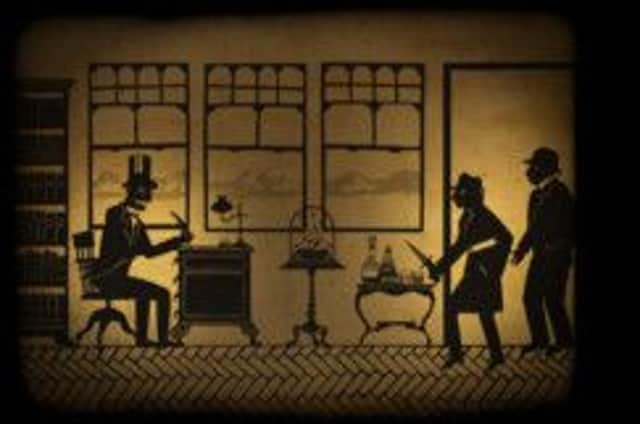Buchan’s The Thirty-Nine Steps gets digital update


Now, nearly a century after its publication, John Buchan’s taut classic, The Thirty-Nine Steps, has been reinterpreted for a new audience courtesy of a digital update which offers a distinctly modern twist on its conventional narrative.
A Scottish company has created an interactive visual version of Buchan’s most famous work which merges the worlds of literature, gaming and film.
Advertisement
Hide AdDescribed as a “revolutionary interactive novel,” it fuses Buchan’s 1915 text with stop-frame animation, hand-painted landscapes inspired by the book, voice actors, and original silent film music.
It also uses archive material from the National Library of Scotland, including copies of Scotland on Sunday’s sister title, The Scotsman, to set the story in context.
While not strictly a game in the traditional sense, readers are able to immerse themselves in locations from the novel, collect items and unlock achievements as Richard Hannay’s plight plays out.
The book’s publisher, Faber & Faber, describes the experience as something which is “not a game, not a film, not a conventional novel, but all three”.
The idea is the brainchild of Glasgow-based Story Mechanics, which began exploring the concept of digital adaptations three years ago by working on sections of classic titles, including Wuthering Heights and Great Expectations.
Encouraged by the results, it soon settled upon Buchan’s masterpiece as its first project proper.
Advertisement
Hide AdSimon Meek, executive producer at the firm, explained: “The idea is never to replace the original text or the book, but instead offer a new way that is empowered by technology and current media consumption trends. We’re also seeing a want from the traditional gaming community for more story-driven interactive experiences, and know that the huge number of casual gamers are keen to try new forms of entertainment to pass the time.
“We have ebooks and the like, but these are simply books with add-ons and enhancements, not ground-up remakes of the stories they contain for new audiences who want to consume them in different ways.”
Advertisement
Hide AdHe added: “Games almost entirely use story as a tool to contextualise gameplay. This means that the emphasis remains on the skill of the interactions, and therefore will ostracise many people. It’s known that most people don’t finish games, which is at odds with them being a vehicle for storytelling.
“However, what we have tried to do is put the story at the centre of the experience – where the sole reason to interact is to be told the story, to experience it from the inside out and allow depths to the narrative and reader experience.”
Originally published as a serial in Blackwoods magazine, The Thirty-Nine Steps was the first of five novels to feature the now iconic literary hero of Hannay.
Buchan himself described the novel as a “shocker,” suggesting the adventure was so unlikely, the reader was only just able to believe that it could really have happened.
Over the years, the work has been adapted numerous times for television and film – the most notable example being Alfred Hitchcock’s 1935 version – but Story Mechanics believes the source material lends itself to its unique interpretation. “The reader is transported into the world of the book, where they experience its story from the inside out,” Meek explained. “We effectively tell the story in situ, using location as our storytelling canvas, where the whole book has been researched and faithfully storyboarded to evoke the mood and character of the story.”
The use of period copies of The Scotsman and other archive documents, he added, helps “bring the book to life in an incredible new way”.
Advertisement
Hide Ad“We don’t shy away from putting the fictional story alongside the real happenings such as the Suffragette movement or Empire Day celebrations, and the adverts alongside the text only goes to further give a sense of the era,” Meek said.
Henry Volans, head of Faber Digital, believes the adaptation breaks ground in digital publishing, and fledgling plans are in place to reinvent other well-known Faber titles.
Advertisement
Hide AdHe said: “It’s not the same as the book, and it won’t replace the book. But there are strong reasons why the new adaptation to digital really matters. For a start, by focusing on existing readers, publishers miss out on a huge group of people who don’t read, or only read rarely.
“It’s incredibly faithful but also different. I love the book. I think it was written extremely quickly, and you can tell: reading it is like watching the development of the spy thriller. With the digital version, what I get most is an absorption in the atmosphere.”
Twitter: @MartynMcL